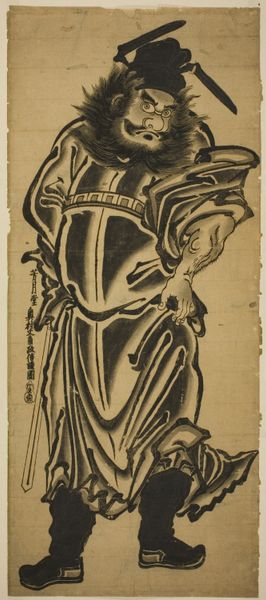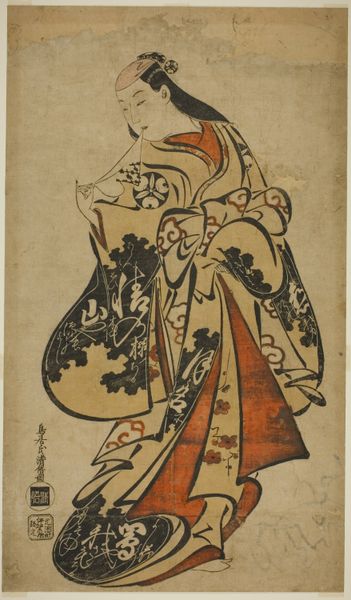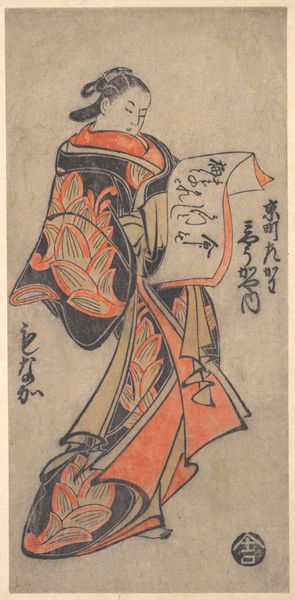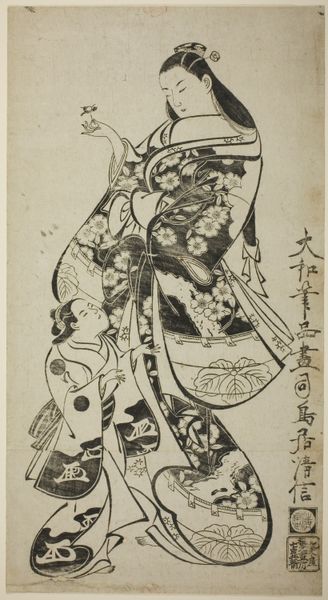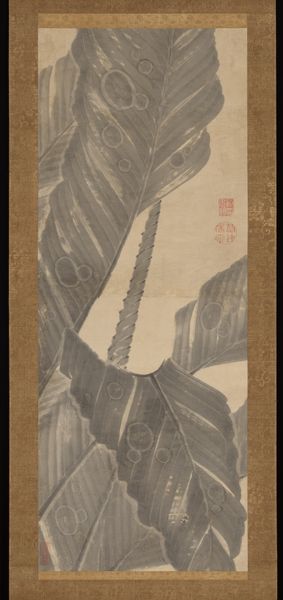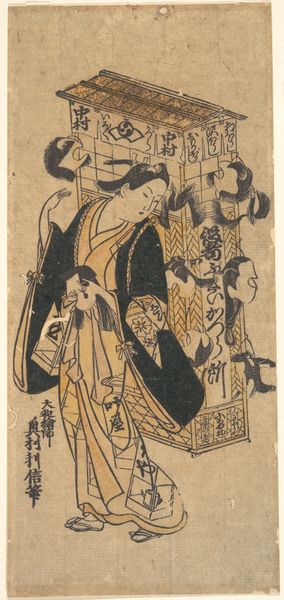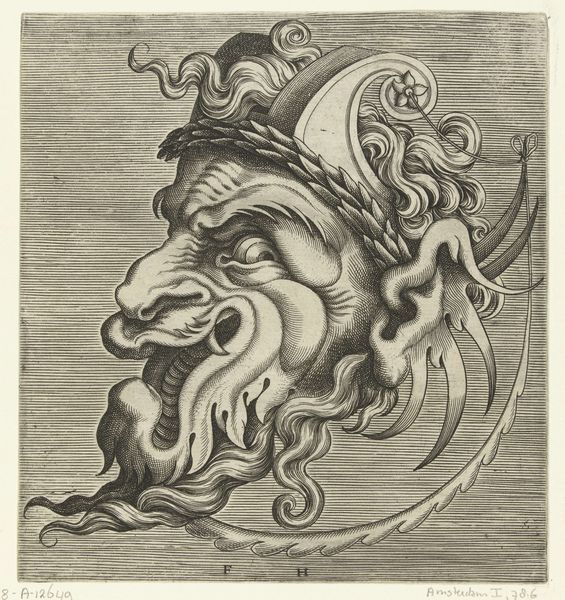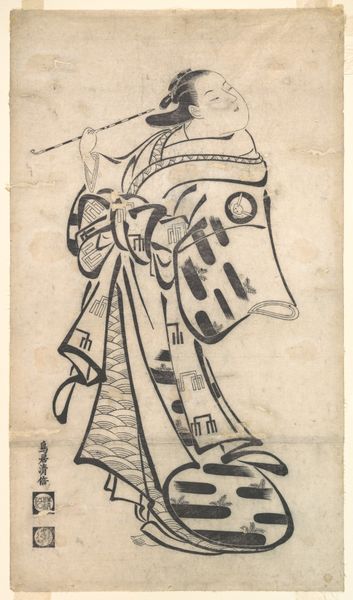
print, ink, woodblock-print
#
portrait
#
narrative-art
# print
#
asian-art
#
ukiyo-e
#
figuration
#
ink
#
woodblock-print
Dimensions: H. 27 in. (68.6 cm); W. 10 in. (25.4 cm)
Copyright: Public Domain
Okumura Masanobu's ink and color on paper artwork, "Shōki, the Demon–Queller," presents a figure deeply embedded in Japanese folklore. Shōki, traditionally a protector against illness and evil, reflects the social anxieties of the Edo period. This work was made during a time when urban centers like Edo, now Tokyo, were experiencing rapid growth alongside outbreaks of disease. Artists like Masanobu tapped into popular beliefs, offering visual talismans that resonated with a public seeking protection. The print's bold lines and dynamic pose visually assert Shōki’s power, playing on cultural narratives of heroism and divine intervention. Such images weren't just art; they were practical objects within a network of social practices aimed at securing well-being. To truly understand this piece, historians delve into records of epidemics, religious practices, and the economics of print culture, illuminating how art served as a response to the challenges of its time.
Comments
No comments
Be the first to comment and join the conversation on the ultimate creative platform.
